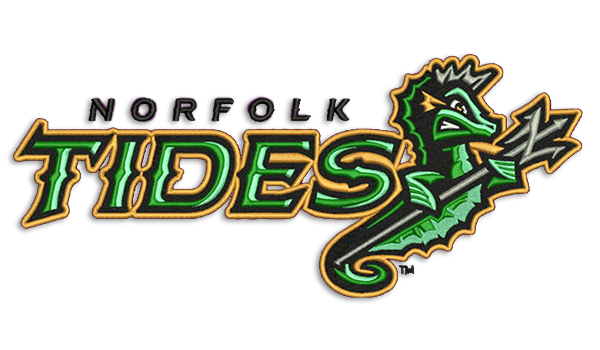Simplifying the Art of Needlework Digitizing: Step-by-Step Guide
As modern technology proceeds to advance, the digitization process has actually become extra accessible, allowing lovers to bring their intricate layouts to life with simplicity. In this overview, we will certainly unwind the intricacies of needlework digitizing, breaking down each action systematically to simplify the procedure and equip both newbies and seasoned embroiderers alike.
Comprehending Embroidery Digitizing Software Application
Embroidery digitizing software offers as an important device for transforming complex designs into digital layouts compatible with needlework equipments, promoting specific stitching and customization. This customized software program enables users to import different image data styles, such as JPG or PNG, and convert them right into needlework machine-readable formats like DST, EXP, or PES - Digitizing for Embroidery. By using attributes like stitch editing, underlay choices, and thread color option, digitizing software allows individuals to control every aspect of the style procedure
In addition, advanced embroidery digitizing software provides devices for developing complex layouts, readjusting stitch thickness, and including complex information. Individuals can additionally preview the style prior to sewing it out, guaranteeing precision and minimizing errors. In addition, several software application programs give automatic attributes that help simplify the digitizing process, conserving time and effort.
Comprehending the abilities of needlework digitizing software is vital for accomplishing top quality lead to needlework jobs. By mastering this device, embroidery enthusiasts and experts can unleash their imagination and bring complex styles to life with accuracy and performance.

Picking the Right Style Documents
After acquainting on your own with the capabilities of embroidery digitizing software program, the next crucial action in the procedure is choosing the appropriate design declare your project. Digitizing for Embroidery. When picking a style declare needlework digitizing, it's important to consider the intricacy of the layout, the dimension of the end product, and the kind of material you will be dealing with
For detailed layouts with great details, a high-resolution photo or vector file is advised to guarantee that the needlework equipment can properly recreate the style. Furthermore, the dimension of the end product plays a significant function in picking the right design file. Larger styles may need higher resolution documents to keep clearness and sharpness.
Furthermore, the kind of fabric you will certainly be embroidering on affects the option of design file. Various materials may require changes in the style file to ensure that the stitches are properly straightened and the style appears as planned. By meticulously selecting the best layout data based upon these elements, you can set yourself up for an effective embroidery digitizing procedure.
Digitizing Tools and Methods
Making use of specialized software and precision methods, digitizing tools are crucial in transforming elaborate styles right into embroidery-ready data. Needlework digitizing software, such as Wilcom, Hatch, or Embrilliance, provides the required platform to convert artwork into stitch data. These programs use attributes like stitch editing and enhancing, padding alternatives, and text tools to ensure the design translates perfectly onto material.
One of the essential methods in digitizing is producing a clear course for the needlework equipment to follow. This involves digitizing each element of the design with precision, identifying stitch kinds, thickness, and directions. By utilizing devices like digitizing tablet computers or software-specific plugins, embroiderers can accomplish a high degree of precision in their digitized styles.
In addition, understanding the art of padding sewing is essential for creating high quality needlework. Underlay sewing supports the fabric and produces a foundation for the style, making Your Domain Name certain that the last product is both aesthetically appealing and lasting. By comprehending these digitizing devices and strategies, embroiderers can raise their craft and bring complex styles to life with accuracy and performance.
Tailoring Stitch Kinds and Instructions
Having developed a foundation in digitizing tools and techniques, an important element ahead of time needlework workmanship lies in personalizing stitch types and instructions with accuracy visit here and function. The choice of stitch types can substantially influence the general appearance and texture of the embroidered design. Satin stitches, recognized for their smooth and glossy finish, work well for creating boundaries and message. On the various other hand, fill stitches are optimal for covering bigger locations efficiently. By strategically incorporating these stitch types, embroiderers can achieve deepness and dimension in their designs.
In addition, the instructions of stitches plays an important duty in improving the visual appeal of the final embroidery. By experimenting with different stitch angles and patterns, embroiderers can bring their styles to life with exceptional information and ins and out.
Screening and Refining Your Digitized Layout
To make certain the precision and top quality of your digitized style, detailed screening and improvement are essential action in the embroidery digitizing process. Once you have completed the digitization of your style, it is crucial to evaluate it prior to waging the actual needlework. Examining allows you to recognize any type of possible concerns such as string breaks, stitch thickness issues, or style distortions that may influence the outcome.

After testing, it is essential to fine-tune your digitized style based on the responses from the examination sew-out. This might entail tweaking sew setups, changing thickness, or making adjustments to the total design to achieve the preferred end result. By iterating through testing and improvement, you can fine-tune your digitized style to excellence prior to relocating forward with the actual needlework process.
Conclusion
Finally, mastering the art of needlework digitizing requires a thorough understanding of the software, picking the ideal design documents, using digitizing tools and strategies, customizing stitch kinds and view it directions, and testing and fine-tuning the digitized style. By following these actions, embroiderers can streamline the digitizing process and create top quality stitched styles with precision and performance.